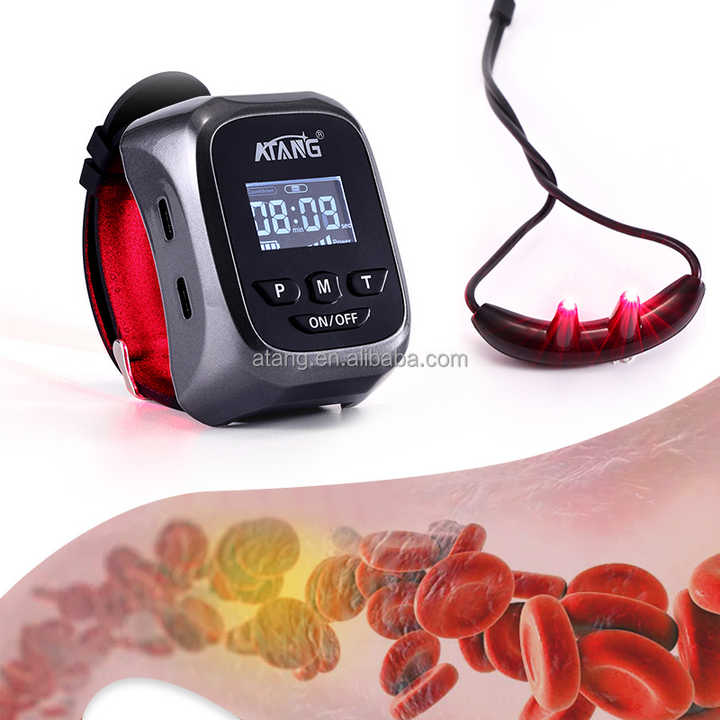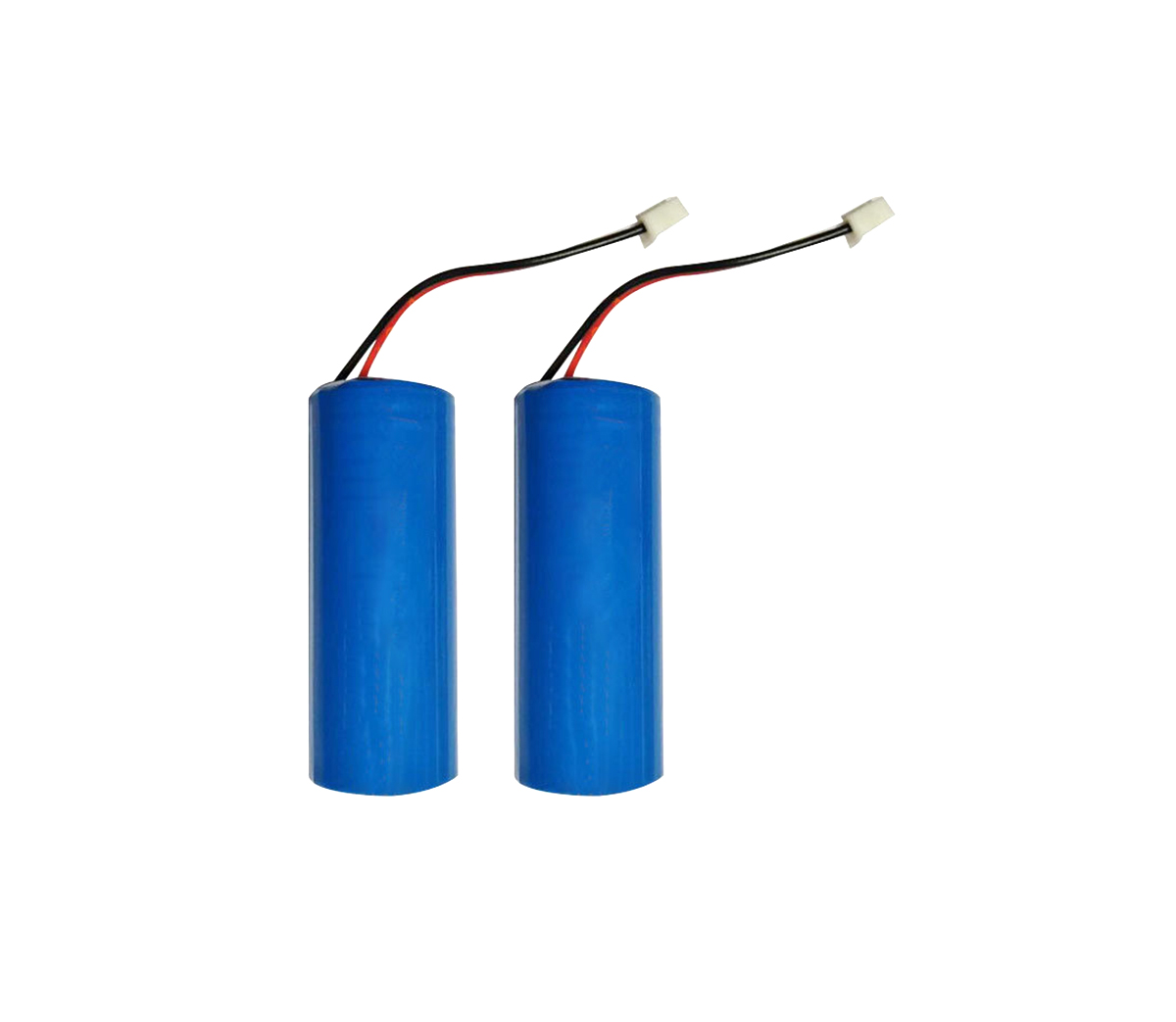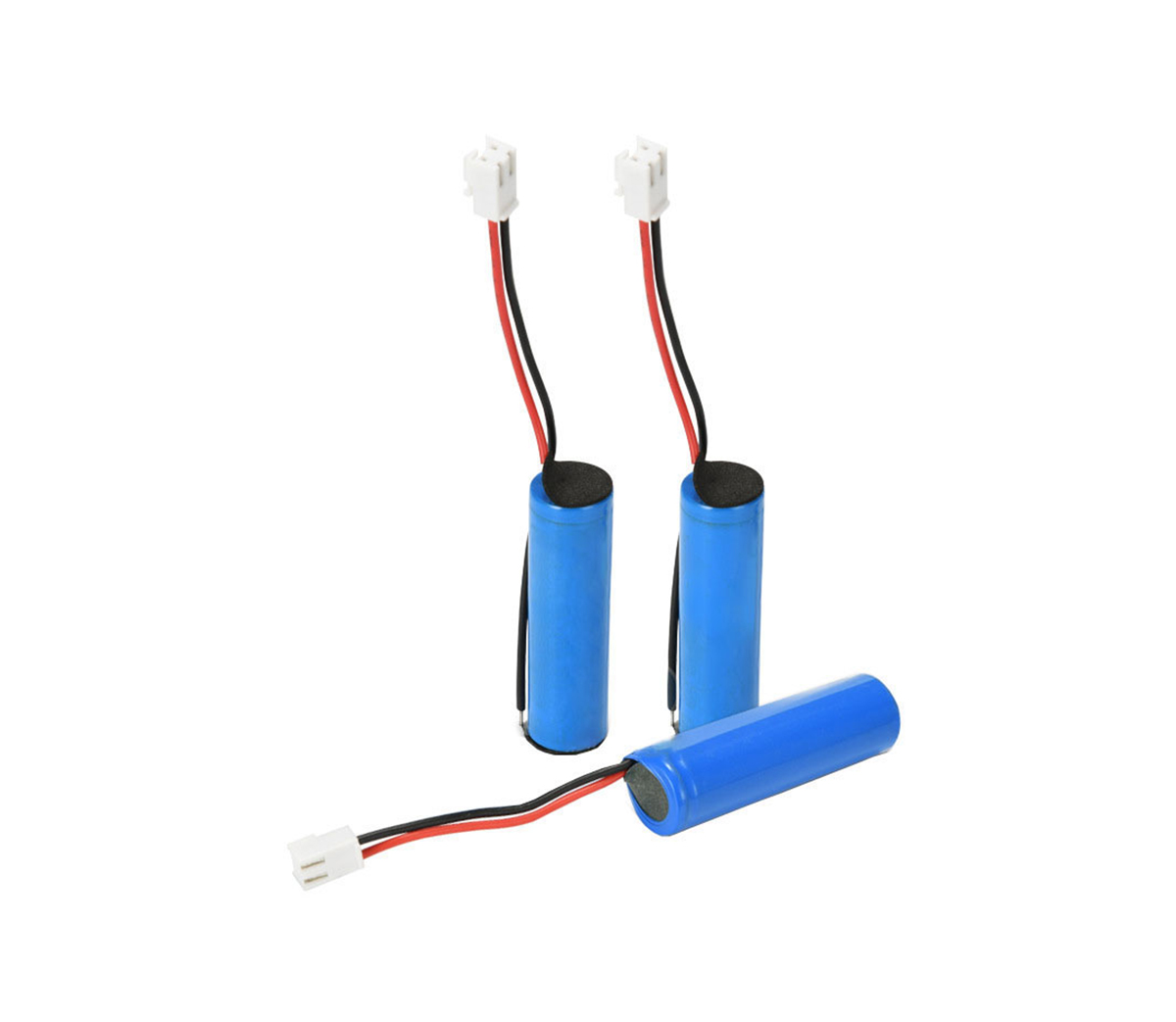Introduction to the top ten technologies of the lithium battery industry in
17 years
The researchers said that the current positive electrode specific capacity,
output voltage and surface load have a large room for improvement, and the
energy density is not enough to match the lithium-ion battery. In the future, it
is necessary to further increase the energy density on the basis of maintaining
high power density. . In addition, the current classic ionic liquid electrolytes
are more expensive. If cheaper electrolytes can be found, the commercial
prospects of aluminum ion batteries will be broader. Shanghai Institute of
Ceramics has developed a new type of high-temperature resistant lithium-ion
battery separator. According to a report on the official website of Shanghai
Institute of Ceramics on November 2, a team led by Zhu Yingjie, a researcher at
the Shanghai Institute of Ceramics, Chinese Academy of Sciences, and Hu Xianluo,
a professor at Huaji University Based on previous research work on the new
inorganic refractory paper with ultra-long hydroxyapatite nanowires, the team
cooperated to develop a new type of high-temperature resistant lithium-ion
battery separator based on ultra-long hydroxyapatite nanowires. Relevant
research results have been published on "Advanced Materials" and an invention
patent has been applied for.
The battery separator has many advantages, such as high flexibility, good
mechanical strength, high porosity, excellent electrolyte wetting and adsorption
performance, high thermal stability, high temperature resistance, flame
retardancy and fire resistance, and can be maintained at a high temperature of
700 ℃ Its structural integrity. A battery assembled with a new type of
hydroxyapatite ultra-long nanowire-based high-temperature battery diaphragm has
better electrochemical performance, cycle stability and rate performance than a
battery assembled with a polypropylene diaphragm. This research work is of great
significance to greatly improve the operating temperature range of lithium-ion
batteries and the safety of lithium-ion batteries. It is expected that the new
hydroxyapatite ultra-long nanowire-based high-temperature battery separator can
also be applied to many other types of high-temperature batteries and energy
storage systems, such as sodium ion batteries, supercapacitors, etc. Japan has
developed fire-proof and explosion-proof lithium batteries that have a service
life that exceeds that of traditional lithium-ion batteries. According to
Xinhuanet’s report on November 30, Japanese researchers have recently developed
a safer lithium-ion battery electrolyte that is not easy to burn or burn even in
environments such as high temperatures. The explosion, related research results
have been published in the British "Nature Energy" (NatureEnergy) magazine.
Researchers from the University of Tokyo and other institutions have
developed a high-concentration electrolyte containing the flame retardant
trimethyl phosphate. This electrolyte is not easy to burn and can achieve high
stable charge and discharge more than 1,000 times or more than one year. The
service life is comparable or even longer than that of traditional lithium-ion
batteries. The research team pointed out that this electrolyte can increase the
working voltage of lithium-ion batteries from the current 3.7 volts to 4.6
volts, which will be suitable for high energy density and high safety energy
storage battery requirements such as electric vehicles. The research team will
work with related companies Advance research. Toshiba of Japan has developed a
new type of lithium battery for electric vehicles, which takes only 6 minutes to
charge quickly. According to a report from Xinhua News Agency on October 15,
Toshiba of Japan has developed a new generation of lithium batteries for
electric vehicles, which takes only 6 minutes to charge. According to reports,
this kind of lithium battery can still maintain more than 90% of the battery
capacity after 5000 times of charging and discharging, and can still be quickly
charged in a low temperature environment of minus 10 degrees Celsius.
Toshiba began to develop SCiB (Super Charged Ion Battery) as early as 2007,
and has been successfully applied to many electric vehicles including
Mitsubishi's iMiEV and Honda's FitEV. The current SCiB uses titanium dioxide as
the anode. The new type of lithium battery for electric vehicles developed by
Toshiba Japan this time is different from the lithium battery that generally
uses graphite as the negative electrode material. It uses titanium niobium oxide
as the negative electrode material, which has the characteristics of high energy
density and ultra-fast charging. The traditional electric vehicle lithium
battery can only be charged to about 80% of the power in 30 minutes, and the new
generation of lithium battery can be charged to 90% of the power in only 6
minutes. Toshiba’s test electric car eventually ran about 320 kilometers after
charging for 6 minutes. At present, Toshiba has made samples of a new generation
of lithium batteries with a capacity of 50 ampere hours and the size of a palm,
and plans to improve them and strive to launch official products in 2019.
Stanford scientists developed sodium-based batteries with lower cost and higher
efficiency than lithium batteries. According to a report on October 10 by the
U.S. Overseas Chinese News Network, researchers at Stanford University have
developed a sodium-based battery that can store as much electrical energy as
lithium-ion batteries. But the cost is greatly reduced. Relevant research
results have been published in the journal Nature Energy.
Researchers pointed out that lithium is the best choice for manufacturing
batteries, but lithium has become rare and expensive. Humans need to use other
richer elements, such as sodium, to develop higher-performance and low-cost
batteries. In the newly designed sodium ion battery, sodium ions can be attached
to inositol, and inositol is a common compound that can be extracted from the
liquid by-products of rice bran or corn processing. The new combination of
sodium ions and inositol significantly improves the ion cycle of sodium-based
batteries, allowing ions to move more efficiently from the cathode through the
electrolyte to the phosphorous anode, which in turn generates a stronger
current. Researchers believe that the battery will help store energy from
sustainable energy sources such as solar panels and wind turbines. The
University of Houston has made significant progress in the research of magnesium
batteries. The new type of magnesium batteries can make energy storage
technology cheaper and safer. According to a report on the elektormagazine
website on September 8, Yao Yan’s team at the University of Houston in the
United States has made significant progress in the research of magnesium
batteries. The new type of magnesium battery will be safer than lithium
batteries. The research results have been published in the journal Nature
Communications. Generally speaking, compared with lithium batteries, the energy
density of magnesium batteries is generally lower. However, through the
development of new cathode materials, the capacity of magnesium batteries can be
increased to 400mAh/g, which is four times higher than the efficiency of earlier
magnesium batteries.
The battery uses a two-dimensional layered TiS2 material with PY14+ ion
in-situ expansion layer as the positive electrode, magnesium metal as the
negative electrode, and traditional chloride-containing magnesium electrolyte
(APC) as the electrolyte. When monovalent MgCl+ is used instead of divalent Mg2+
as the intercalation ion, only a simple desolvation (Ea~0.8eV) process occurs
during ion intercalation, and the Mg-Cl bond does not break, and compared to
Mg2+, MgCl+ solid The phase diffusion energy barrier is significantly reduced
(~0.18eV), and the diffusion rate is greatly increased. At present, the voltage
of the magnesium battery is about 1 volt, and the voltage of the next-generation
battery under development can be close to 3 volts. Stanford University, USA:
Lithium alloy/graphene "melee cake" opens a new era of lithium battery According
to a report from Science and Technology Daily on July 14, Professor Cui Yi's
research group from Stanford University has developed a lithium alloy/graphene
foil negative electrode. The capacity is close to the theoretical volume
capacity of lithium metal, and has excellent safety characteristics. Related
research results have been published in the journal Nature
Nanotechnology. Researchers said that by wrapping tightly packed lithium alloy
nanoparticles in large graphene sheets, lithium alloy/graphene "melee cakes" can
be prepared. Since the lithium alloy itself is the state with the largest
volume, and is limited to the graphene "cake" with high conductivity and good
chemical stability, the volume expansion of the alloy negative electrode and the
dendritic growth of the lithium metal negative electrode are avoided. The
"melaleuca" can also be assembled with a high-capacity sulfur cathode to form a
high-efficiency, stable, and long-life battery, which greatly increases the
energy density and safety performance of the battery. With its high capacity,
excellent cycle performance and safety characteristics, the lithium
alloy/graphene foil is expected to be used as a replacement for lithium metal
anodes in the next generation of lithium/air and lithium/sulfur batteries.
Professor Pan Feng's research group from the School of New Materials, Shenzhen
Graduate School has achieved breakthroughs in the study of the properties of
nano-single-particle lithium batteries. Breakthroughs have been made in the
research on the properties of lithium batteries, and the relevant research
results were published in the "Advanced Energy Materials" (Advanced Energy
Materials) as a cover article.
The research group developed a method for preparing ultra-thin
electrodes with dispersed single nanoparticles. The particles on this electrode
were completely dispersed in the carbon nanotube network, and then
electrochemical tests were carried out. At the same time, the research group
developed a single-particle nanoelectrochemical calculation model. This
single-particle model was simulated by the charge-discharge curve and CV curve
obtained from experiments to obtain the interface reaction constant and lithium
ion bulk diffusion coefficient of the single nanoparticle. By measuring and
simulating and calculating the information of single particles in different
electrolyte environmental systems under different temperature conditions, the
research group proposed for the first time the pre-factor of the electrochemical
interface kinetic reaction and the solvation and desolvation of lithium ions on
a single particle. The activation energy of the process is directly related, and
at the same time the structure of the nanocrystal interface is related to the
electrochemical performance of the battery. Qing Energy Research Institute has
developed lead-free lithium batteries at a cost of 0.5 yuan per watt hour.
According to a report from Qingdao Daily on January 20, Qingdao Institute of
Bioenergy and Processes released the latest scientific research results: the
first in China to successfully develop green and environmentally friendly
lead-free Lithium-ion batteries, and the cost per watt-hour is controlled at 0.5
yuan, which has the conditions for industrialization. Green Energy Research
Institute’s R&D team has innovatively proposed three solutions for low-cost
lithium-ion battery technology, low-cost water-based zinc battery technology and
new magnesium battery technology. The large number of applications of lead-acid
batteries in the past lies in their significant cost advantages, with a cost of
about 0.5 yuan per watt hour. The lead-free lithium battery developed by
Qingneng uses new material systems such as low-cost flame-retardant cellulose
separators, low-cost carbon anodes, and fluorine-free environmentally friendly
lithium borate salts, as well as improved new technology and processes, which
have reduced the cost per watt-hour Controlled at 0.5 yuan, it has the
industrialization conditions for equivalent replacement of lead-acid batteries.
At present, the key technologies of the three new types of batteries have been
broken through and the pilot test in the laboratory has been completed. However,
zinc and magnesium batteries cannot be mass-produced for the time being, and
only lithium batteries have the conditions for mass production. The Institute of
Youth Energy is advancing the industrial cooperation with the Reading Group, a
manufacturer of low-speed electric vehicles, to make low-speed electric vehicles
a truly environmentally friendly means of transportation. Panasonic released a
heavy release of bendable lithium batteries to achieve mass production.
According to a report from MIT Technology Review on January 6, Panasonic
released three different versions of bendable batteries at this year’s CES. This
new type of lithium-ion battery can be twisted or bent 1000 After this time, 80%
of the capacity was maintained. According to Yoriko Yagi, deputy director of
Panasonic's Wearable Energy Department, the battery will begin mass production
from April 2018 to March 2019. Panasonic has already provided samples to all
potential customers in October last year. The thickness of Panasonic's flexible
batteries is only 0.45 mm. Each battery is the size of a bank card, but its
capacity is also very small. The CG-064065 battery with the largest capacity is
only 60 mAh (mAh), while the smallest battery is only 17.5 mAh (mAh). This means
that this new type of battery is only suitable for low-power consumption
products such as wearable devices, card-type devices, and IoT devices.


































